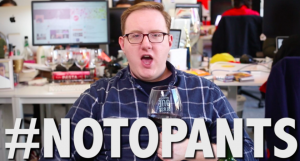In the google controversies article, one of the issues discussed is how to equalize the amount of access different people have to google depending on the policies created by their governments. The thing that struck me about this article was that it pointed out something that had not necessarily occurred to me before— google is not all encompassing. It does not make its own rules. It is a company that has to adhere to the rules of the governing bodies of the countries in which google offers its services. Yet, at the same time, those government officials who are making the rules are probably googling the words in the rulebooks to see how to spell them.
It is an odd paradox— we know which came first in this situation, whether it be the chicken or the egg. But we don’t quite know how to separate them. The problem is that the chicken and the egg are now mutually dependent on each other, and one of them is far more aware of it than the other. As a company, google knows that it exists to make money and to, as their motto suggests not “be evil.” As a society, we do not quite realize the experience that we are having with google. In order to find the answer to that, we would probably have to google it. There are probably google searches on google in which people search for articles that are written about google itself. The point here is that google is intrinsic. It is becoming enfolded into our society, and most likely, it is becoming enfolded into other societies as well.
However, that, in combination with the China issue, brings up a few questions. Mainly, if the google experience is different depending on where we live in the world, how does this affect the way our populations are growing? It could be argued that a huge amount of American viewpoints come from having access to absolutely everything. If we want to go onto the internet and research reasons why 9/11 was a plot created by the Bush administration, we can do that. According to the phenomenon of groupthink, if we go into google expecting one answer and end up finding that answer supported by others, we will be even more convinced that we are correct. Technically, it is our right to believe that of our government. Whereas in China, if people wanted to even consider writing an article about that, they would immediately get trouble from their government, and the article most likely could not be listed on google. There is information that the government does not want their constituents to have, and that means that their access to the world is cut off short in a way that nobody else’s is.
This could be nothing, but it also could be something enormous. Given the fact that the internet is such a new phenomenon, there is no way of telling how exactly it is going to affect us socially. For example, perhaps people with less access to information will have less authority over the circumstances of their lives and government. Perhaps they will have less access to the ideas of others, which will help them understand where their general population lands on certain issues. However, less access to information could also lead them to have different types of development that a society such as America, with such enormous access to the internet. Different conversations and creative accomplishments could be the result of less access to certain information because with it may come less reliance on a search engine like google.
However, the idea that google might have limitations also leads one to realize how all-encompassing it is. Most people have a google tab open constantly on their computers. UMass’ email accounts are linked to google, so the school would not be able to function properly if something happened to it. America depends on google, despite the fact that its main function is to link Americans to other places. Despite other companies’ attempts to become true competitors to google, they haven’t been able to. The development of America, and other places around the world, is inevitably going to lead heavily on google as an establishment. And due to all of the increased access to information— correct or incorrect— this may lead the government and its citizens down a path that they have never been before. One would think that, due to google’s motto of “don’t be evil”, they would be able somehow control for how positive, negative, or correct the influencing information offered is. But google, and its effects on the world, are pretty much a wild card. Whether or not google ends up making the world more or less evil is still a story that needs to be told.







